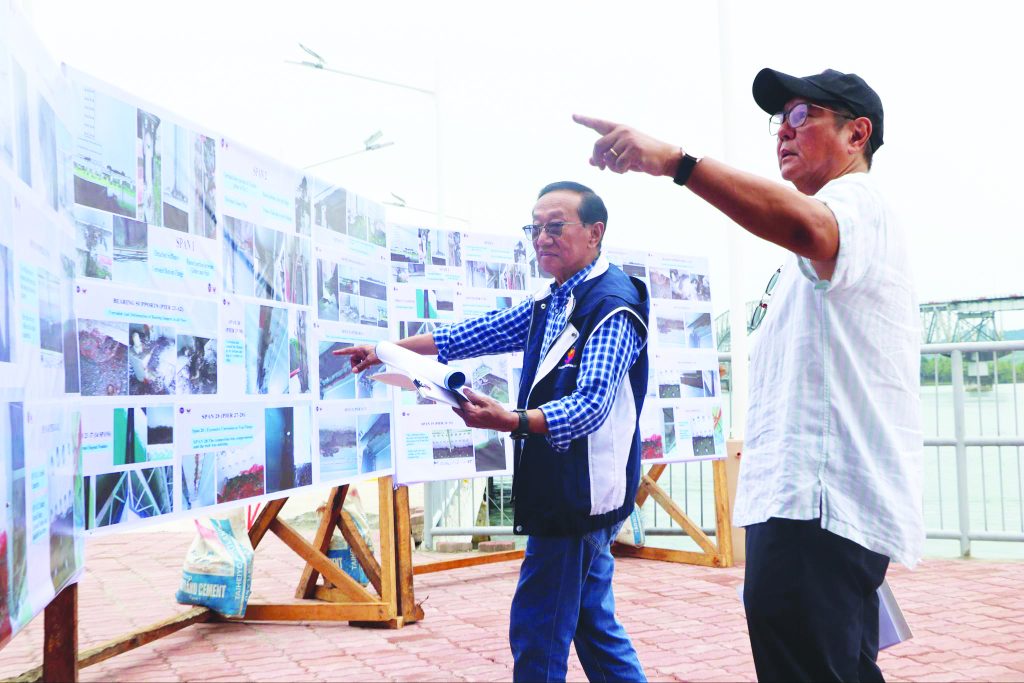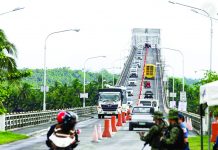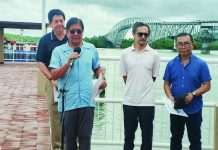To last for a year

BASEY, Samar — President Ferdinand Marcos Jr. has defended his decision to place Eastern Visayas under a state of calamity, saying it was essential to unlock immediate funding and support in response to disruptions triggered by the partial closure of the San Juanico Bridge.
“It’s important that we declared a state of calamity so we can bring in additional funding, additional services, and initiate convergence (among government agencies),” the President said in an ambush interview on Wednesday, June 11, during his visit to the Amandayehan Port in Basey, Samar.
President Marcos signed Proclamation No. 920 on June 5, declaring a state of calamity in the region following the imposition of a three-ton weight limit on the 2.16-kilometer San Juanico Bridge—a key infrastructure linking Leyte and Samar and the rest of the country.
The state of calamity is to last for a year and would only be lifted once the traffic returns to normal, the President said.
The Department of Public Works and Highways (DPWH) enforced the restriction on May 15 due to structural concerns, a move that disrupted the delivery of goods, fuel, and basic necessities, particularly on the Samar side.
The National Disaster Risk Reduction and Management Council (NDRRMC) earlier recommended the declaration due to the growing economic and logistical impact following the load limit at the 2.16 kms iconic bridge.
During his visit, Marcos also spoke with truck drivers stranded due to the weight limit. He expressed concern about their welfare, noting they were struggling not only with lost income and meals but even with basic personal needs like bathing.
To ease the burden, the President said the government had mobilized more vessels for the Amandayehan Port–Tacloban Port route, which became operational on June 7 with a travel time of roughly 30 minutes. At least four shipping companies now operate on this route, offering up to 10 trips daily.
Marcos also said the government is exploring alternate transport corridors, such as those linking Calbayog City to Ormoc City and routes through Palompon, both in Leyte, to maintain the flow of essential supplies.
The proclamation received strong support from the business community.
Rhoel Ladera, a member of the Leyte-Tacloban Chamber of Commerce and Industry, thanked the President for acting quickly.
“The declaration empowers authorities to respond more quickly and allows for the faster release of funds to stabilize essential services and mitigate the logistical and economic fallout,” Ladera said.
He also emphasized that the proclamation “treats the issue not merely as infrastructure damage but as a regional or national crisis that demands urgent government intervention.”
Prior to the national declaration, Tacloban City, Samar, and Eastern Samar had already declared their own states of emergency.
The President was joined during the visit by House Speaker Martin Romualdez, Tacloban City Mayor Alfred Romualdez, his son Rep. Sandro Marcos, and Cabinet Secretaries Vince Dizon (Transportation) and Manuel Bonoan (Public Works and Highways).
JOEY A. GABIETA



